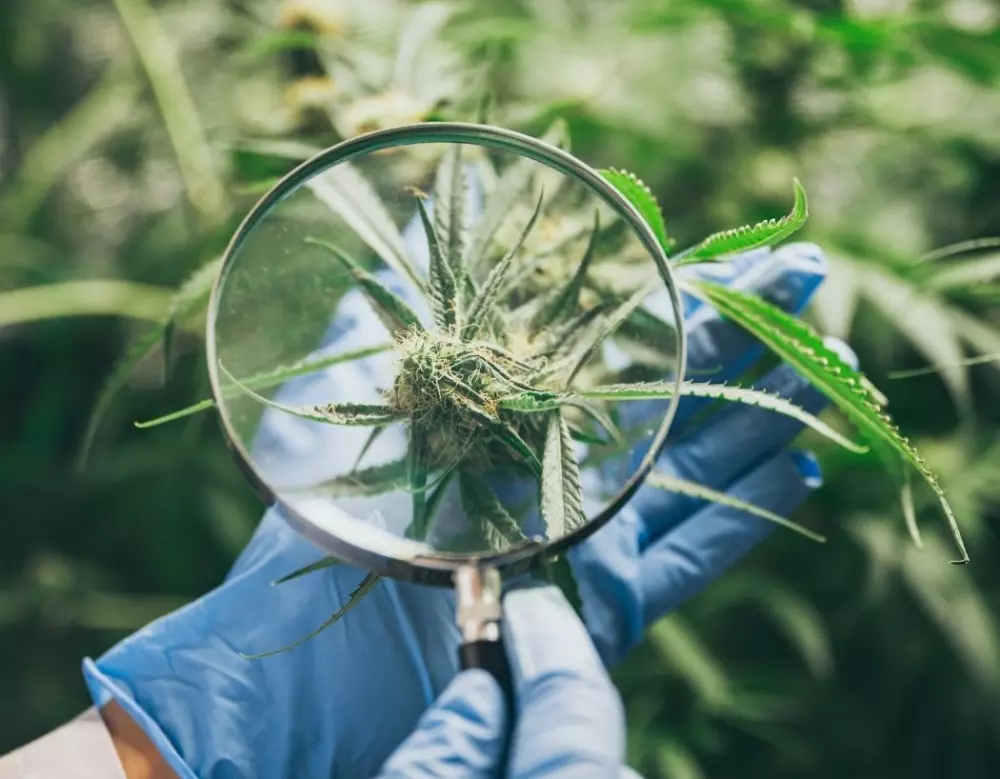When you think of cannabis, you might envision its rich green, serrated leaves, or fondly recall its telltale dank smell. You might also remember the nights you’ve taken CBD to help you fall asleep, a cannabis topical you’ve used to calm bodily aches and pains, or, perhaps, how a loved one used cannabis to help manage the side-effects of chemotherapy from cancer treatments. The cannabis plant is incredibly complex and has many elements that contribute to its varied and ameliorative effects. One key element, a group of chemical compounds called cannabinoids, play a huge part in how the cannabis plant interacts with the human body.
THC and CBD
You’ve heard of the two best-known and most-researched cannabinoids: THC, the compound that is responsible for what's known as the euphoric "high," and the non-intoxicating CBD, beloved by many for its potential to soothe inflammation and anxiety, and treat a variety of other conditions. But THC and CBD are not the only cannabinoids in town. Humans make one of their own, an endogenous, or inside the body (as opposed to exogenous, or outside of the body) cannabinoid called anandamide. The name originates from the Sanskrit word ananda, which roughly translates to “bliss,” an indication of the cannabinoid’s properties as a mood enhancer. So far, scientists have identified more than a hundred cannabinoids, and it is believed there are many more.
The Endocannabinoid System
Each cannabinoid exerts different effects by binding to cannabinoid receptors in the body called CB1 and CB2. These receptors are found throughout the body, including in the immune system, brain, skin, heart, blood vessels, kidneys, digestive tract, skeletal muscles, and nervous system. This network of CB receptors make up what's known as the endocannabinoid system (ECS). The ECS manages a physiological function called homeostasis, or a state of bodily harmony. Homeostasis is a delicate balancing act, and an ECS performing at its best allows the human body to maintain the systems necessary for its survival, like consistent body temperature, water levels, fat, calcium, protein, and oxygen in the blood. But the ECS is about more than just survival. It has an impact on reproduction, memory, pain, appetite, digestion, and other systems. It also responds to external changes, like a change in the outside temperature, or dehydration, to keep the body in the "Goldilocks zone," where everything is just right. When bodily systems are out of balance, it’s the ECS that sends anandamide to the cannabinoid receptors in an attempt to restore harmony. And when cannabis consumption comes into the picture, cannabinoids like THC and CBD also play a role in calibrating the ECS. However (and this is a big caveat) the research showing exactly how, in what quantities, and by what consumption methods exogenous cannabinoids like THC and CBD may help to regulate the ECS is scant.
A Long List of Chemical Compounds
It’s important to remember that THC and CBD are only two of the many dozens of cannabinoids researchers have identified so far, all of which may play an important role in regulating homeostasis. In fact, THC and CBD are not even the most abundant of cannabinoids found in the plant. The most abundant marijuana cannabinoids are THCA and CBDA. In order to become the THC and CBD that we know and love, THCA and CBDA have to be unlocked, so to speak, through a process called decarboxylation — a natural process that occurs through heating. (It’s why you heat raw cannabis before baking it into your brownies. Otherwise, you’ve made an expensive brownie salad.) Here’s a list of some of the cannabinoids we’re still learning about:
- CBC, or cannabichromene, may help reduce inflammation, and could have antiviral effects
- CBCV, or cannabichromevarin, is a variation of CBC. Also believed to be non-intoxicating, it may help to reduce pain and inflammation
- CBD, or cannabidiol, is best-known for its anti-anxiety and anti-inflammatory properties. There is one FDA-approved CBD-derived medicine, Epidiolex, intended for the treatment of epileptic conditions Lennox-Gastaut Syndrome and Dravets Syndrome
- CBDV, or cannabidivarin, is a variant of CBD. Some researchers think that like CBD, CBDV may help treat epilepsy
- THCV, or tetrahydrocannabivarin, is a variant of THC and is considered a rare cannabinoid. Initial research shows it could play a role in reducing appetite
- CBG, or cannabigerol, is also thought to be a rare cannabinoid. Non-intoxicating like CBD, CBG may promote bone growth and reduce bacterial growth
- CBN, aka cannabinol, may also be non-intoxicating like CBD and CBCV. So far, studies show that it may be sedative and help relieve pain, inflammation, and help stimulate appetite
- THCA is raw cannabis and will not get you high. Full of vitamins and minerals like fiber, iron, and calcium, some juice raw cannabis for its nutritional benefits
- CBDA is cannabidiolic acid, and may have more antimicrobial properties than CBD
- THC, or D9-tetrahydrocannabinol, becomes intoxicating after decarboxylation. It may help with conditions like low appetite, nausea, and muscle spasticity
As cannabis legalization continues to open up across the country, more opportunities for thorough research should open up. It's an important step to grant researchers and clinical trials access to legal cannabis so we can learn more about the beneficial properties of the plant.
